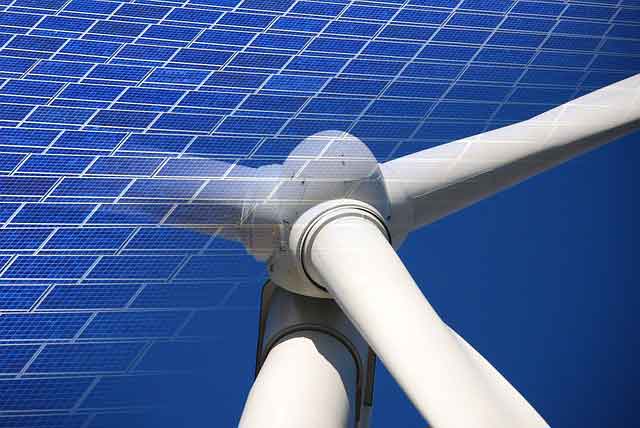Renewable Electricity Technology

Renewable electricity enables grid integration of solar, wind, and hydro via power electronics, inverters, and converters; optimized by SCADA, EMS, and storage for frequency regulation, reliability, decarbonization, and resilient microgrids across transmission.
What Is Renewable Electricity?
Renewable electricity is grid power from solar and wind, enabled by power electronics, storage, and control systems.
✅ Power converters and inverters synchronize renewables to the AC grid.
✅ Energy storage mitigates intermittency and supports frequency regulation.
✅ SCADA, protection relays, and EMS ensure stability and safety.
Renewable Electricity Renewable electricity (RE) policy is an important subset of industrial and energy policy, and thus needs to be aligned with the energy policy priorities of sustainability, competitiveness, and security. Our common and only long-term natural advantage in the energy sector stems from renewable electricity resources such as wind, biomass, and ocean energy. For a concise overview, see what is renewable energy for context.
Climate change mitigation and security of supply have become the focus of many recent national electricity policies. Renewable energy resources can play an important part in addressing both of these concerns. Additional background on key renewable energy sources can clarify technology options.
Against this background of increasing fossil fuel prices and remarkable energy growth demand, this page focuses on renewable electricity. Readers can also learn the facts about renewable energy to understand policy implications.
Consumers demand secure, dependable and competitively priced electricity and producers must be responsive to these market requirements. Well-designed renewable energy systems help meet these expectations.
The combination of increased demand for renewable electricity and security of supply is a very powerful driver of major power sector change worldwide. Currently, for example, about 50 per cent of energy demand is met with imported fuel and there are projections that this could rise to about 70 per cent in future decades. Economic development and increasing consumption of electricity-consuming equipment will increase the demand for future electricity. Comparative insights into renewable alternative energy highlight pathways for reducing import dependence.
Alongside electricity demand and security of supply issues, climate change also poses a global threat. Large scale decarbonisation of electricity generation and many other sectors will have to occur if the planet is to stay within the 2 degree C target for limiting global warming effects. Scaling clean renewable energy remains central to achieving these targets.
The key components of such a vision are:
- A regional power system based on a SuperSmart Grid;
- The rapid scaling up of all forms of renewable power, with the ultimate goal of decarbonising electricity generation in Europe and North Africa;
- A unified European power market that is united with the North African one, allowing for the free trading of electricity between all countries;
- The production of renewable electricity at the most suitable sites by the most suitable renewable electricity technologies
Renewable Electricity ResourcesResources and technological applications that may qualify as a source for Clean or Renewable Electricity production are listed below:
In many markets, renewable energy credits support project economics and tracking of environmental attributes.
Biogas Energy - refers to renewable electricity produced from a plant that mostly captures biogas for conversion to electric power. Biogas refers to the gaseous constituents (mostly methane and carbon dioxide) are produced from solid organic waste. Facilities producing biogas fuel include municipal garbage landfill sites, common sewage treatment facilities, and anaerobic deterioration of organic waste processing plants.
Biomass Energy - refers to renewable electricity generated from the burning of organic materials. Biomass includes, but is not limited to:
- Clean wood biomass, which translates into
- wood residue
- wood leftover debris from logging activities
- organic residue from pulp and paper production plants
- timber infectedd with mountain pine beetle
- Liquid fuel that comes from biomass sources such as bio-oil, ethanol, methanol, etc.
- Dedicated energy crop sources such as corn
- Clean burning and organically sourced material which has been separated from municipal solid waste
Energy Recovery Generation (ERG ) - refers to renewable electricity generated from the recovery of industrial waste energy that would otherwise be emitted into the atmosphere. ERG represents a net environmental benefit relative to existing energy production because it uses the waste output of other industrial processes to generate electricity. Therefore, all energy output from an ERG plant is considered renewable.
Geothermal Energy - refers to renewable electricity produced using the natural heat of the earth, including steam, water and water vapour as well as all materials dissolved in the steam, water or water vapour.





_1497100159.webp)




